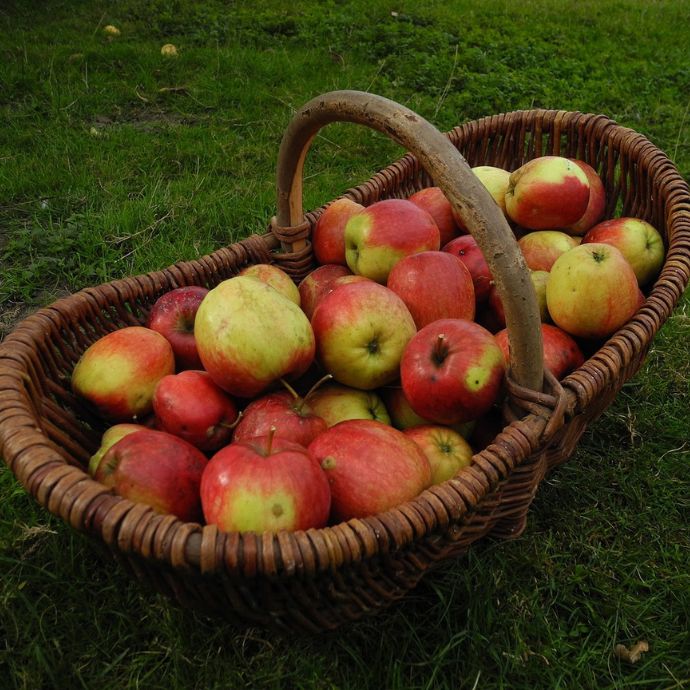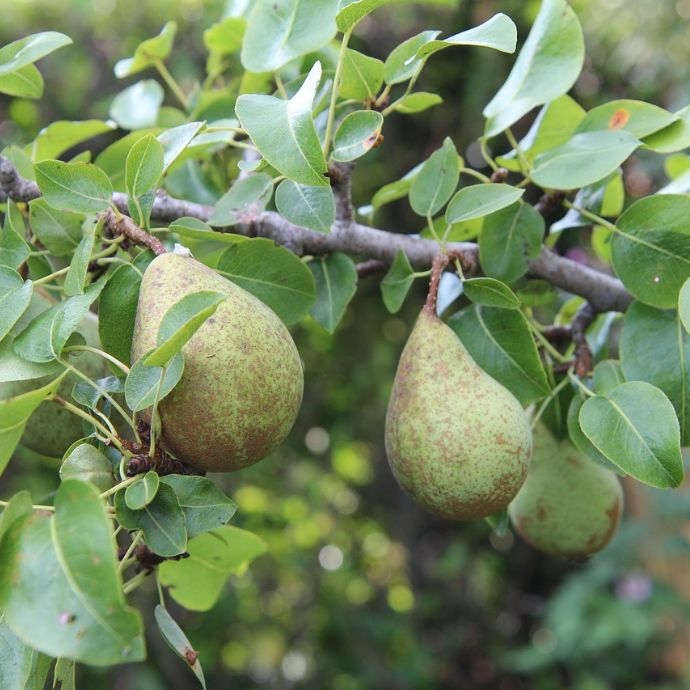Advice & Inspiration
How to Grow a Lemon Tree in the UK

When life gives you lemons, double-check that you’re actually in the United Kingdom, because of all the types of tree out there, growing citrus trees isn’t what we’d first associate with the proud fruit-growing tradition this nation possesses. Apples? Obviously. Pears? Why, of course. But lemons? It’s true, seriously! You can grow lemon trees (and other citrus fruits) in the British Isles, you just need to know how to properly go about it.
In this guide, we’ll walk you through how to successfully grow your very own lemon tree, even in British weather conditions. Whether you want to go the whole lemony hog and grow your tree from seed, or jump a few steps and grow it from a plant, we’ve got you covered. So, buckle up, put away the lemonade stall business plan for the time being, and join us as we unpack all things lemon-related.
Jump to:
- Where are lemons from?
- Growing a lemon tree from seed
- Growing a lemon tree from a plant
- Tips for watering lemon trees
- Do lemon trees need feeding?
- How to prune lemon trees
- Harvesting lemons
- Storing lemons
- Lemon tree problems
Where did lemons traditionally grow?
It will come as perhaps no surprise that these sun-loving citrus plants aren’t originally from the grey and mizzly climes of Milton Keynes or Luton. Cue feigned shocked noises. Lemon trees are, in fact, native to Asian countries like China, India and Myanmar, and have been around for millions of years (around eight million to be precise).
As global trade routes opened up, however, it didn’t take long for the humble lemon to make its way to other countries around the world, including Italy, Persia (modern-day Iran) and Egypt – all regions blessed with the hot, sunny weather ideally needed to get the most from this tree.
By the 15th century, lemons had been introduced to the Americas, and it’s thought that the fruit had probably made its way to northern Europe by the 16th century, as evidenced by the fact that – your favourite bard and mine – William Shakespeare, referenced the fruit in his early comedy, Love’s Labour’s Lost. In short, this tree has a history as compelling and interesting as its juice is tart and sour.

How to grow a lemon tree from seed
Let’s clear something up right from the off – growing a lemon tree from seed requires time and patience. The tree that grows won’t bear fruit for a number of years and any lemons that it does produce are likely to be smaller than those of its grafted cousins.
Still, if you’re just after that rewarding feeling of growing something completely from scratch, there are plenty worse options out there than to go with a lemon tree.
To start with, select your lemon! Get a variety you like and collect the seeds from the fruit. Then, clean them of any of the fleshy pulp by running them under a cold water tap. Unlike some other seeds, lemon seeds don’t require cold stratification.
Whilst you can directly plant your cleaned seeds in some potting mix, we like to add in the damp paper towel step as that way you can see which seeds have successfully sprouted and are therefore viable and have a better chance of growing.
Top tip: Once you’ve dried them with kitchen roll, peel the outer layer of your lemon seeds as this can help them germinate faster and reduce the likelihood of the seeds rotting.
Once your viable seeds have been identified, plant them in either a seed tray or small plastic pot, in a potting mix that’s been especially designed with citrus plants in mind. There are plenty of brands out there offering this potting mix, but general-purpose potting mix will also work well if you already have that to hand. In terms of planting depth, aim to insert your lemon seeds just a couple of centimetres down.
Now that your seeds are planted, give them a good watering and then transfer your seed tray/pots to a warm, sunny spot indoors, where temperatures consistently remain around the 22.5°C mark. Ensure the potting mix doesn’t dry out.
After a few weeks, you should start to see some shoots breaking through. As leaves develop, you can transfer individual seedlings to larger pots, continuing to grow them either in a sunny, sheltered area outdoors (once you’ve hardened them off) or in a greenhouse or conservatory.

How to grow a lemon tree from a plant
An easier option is to grow a lemon tree from a plant that’s been nursery-grown for a couple of years. This way, you get a grafted tree that’ll produce fruit more quickly and reliably than a tree that’s been grown from seed. You might say that the nursery puts in the graft so you don’t have to…
It also means that the tree you grow will be hardy enough to withstand UK conditions, as it’s been grown in UK conditions. The lemons you buy from the supermarket are likely to have come from somewhere like Spain, Brazil or South Africa; the seeds, therefore, will produce trees that are less likely to be able to cope with the cooler climate of the UK.
Where should you grow lemon trees – indoors or outdoors?
The answer to this sort of depends on where you live. If you live in a particularly cold area (or you just fancy adding a touch of the Med to your home’s interior) then you can grow a lemon tree indoors in your conservatory.
Of course, living in a warmer area by no means precludes you from growing one of these trees indoors, it’s just that you're also blessed with the option of outdoor growing and we’ve found that, given the choice, people prefer to place their citrus tree on the patio.
Whether you grow your tree indoors or outdoors, the most important thing is that your lemon tree gets sufficient sunlight. As a sun worshipper, your tree needs to receive at least six to eight hours of direct sunlight per day. If your indoor space doesn’t get that much sunlight, then you’ll need to invest in a horticultural grow light to emulate that natural light.
Even if you grow your lemon tree outdoors, you’ll need to bring it indoors in the colder winter months to protect it from the dangers of frost. If possible, store your tree in an unheated greenhouse, garage or shed.
Tips for planting a lemon tree
Like most citrus trees, lemon trees are best grown in large containers rather than planted in the ground. This is primarily because they’re tender to frost, and therefore planting in a pot enables you to move your tree in the colder months to protect it.
Choose a container that’s roughly twice the size of your tree’s root ball when it arrives. This gives its roots plenty of room to develop and means you won’t need to repot your tree for at least a year or two.
One of the most important considerations when choosing a pot is assessing its drainage capabilities. Citrus trees, including lemon trees, require good drainage as waterlogging can spell big problems for your tree.
Just as with your lemon tree seedlings, you can use a citrus-specific potting mix when planting your tree, or again, a more general-purpose potting mix (not to be confused with potting soil – there’s a difference) will work fine, provided that it drains well.

Watering lemon trees
Getting your lemon tree’s watering regimen correct is crucial in ensuring it stays happy, healthy and growing well. Contrary to popular our belief, pouring water directly onto a lemon tree doesn’t in fact lead to instant lemonade draining out of the bottom. We were shocked. Shocked, we tell you.
Overwatering is one of the leading causes of lemon tree stress, so it’s important that you avoid this. As a general rule, you can water your tree pretty liberally in the spring and summer, especially in hot, dry spells. As with all container-grown plants, compost/potting mix dries out more quickly so you might even need to water your tree daily in hot weather.
Signs of an overwatered lemon tree are pretty obvious; leaves become yellow and start to droop, or they drop off altogether. The leaves might also start to curl at the edges. If you notice this happening, dial back your watering immediately.
Your tree will still need watering in winter, especially when it’s been brought indoors and not getting the moisture it needs from rainwater. You have to be a bit more careful at this time of year, though, and you certainly can’t be as gung-ho with your watering as you were in the hot summer months.
Water your tree only when the top layer of potting mix/compost has partially dried out, and do so with rainwater if possible. We’d highly recommend installing a water butt in your garden to collect rainwater. Not only does it save on your water bill, but it typically has a lower pH than hose water which is beneficial for plants.
Don’t forget to mist your tree, either. Originating from regions of high humidity, spraying your tree’s leaves with water can help maintain the humidity levels the tree prefers. To avoid your leaves scorching, mist your tree earlier in the day before the sunlight becomes too strong.

Feeding lemon trees
Like all citrus fruits, lemon trees are hungry feeders – trees after my own heart… And the good thing is that there are readily available, citrus-specific fertilisers that you can buy, designed for use on lemon and orange trees.
Typically sold as liquid feeds, these fertilisers should be added to clean water and applied to the base of your lemon tree, usually every week or fortnight. Don’t worry, though, it’ll be clear on the manufacturer’s label what you need to do.
If you want to go for something homemade, then you can sprinkle some coffee grounds or epsom salts around your tree. Alternatively, if you have access to fresh seaweed, then you can make your own liquid foliar feed or use it as a top dressing or mulch in late winter to give your tree a nutritional boost.
If you’re making a liquid seaweed feed, we’d recommend just giving your kelp a quick wash to scrub it of that salt from the seawater. When used as a mulch, though, rain will do a perfectly good job of doing this washing for you.

Pruning lemon trees
The section you’ve all been dreading. Nobody likes pruning, it’s one of those gardening jobs we know is important but would really rather somebody else did. Luckily for you, lemon and other citrus trees require only minimal pruning. Did anybody else just hear some angelic music?
You’ll only need to tackle your lemon tree a couple of times during the year, once in late winter and then again during the summer months. In winter, trim any overcrowded or crossing branches as this helps maintain a good shape and also ensure good air circulation between the branches.
In summer, when your lemon tree is basking in glorious sunshine (or the random hail storm we’ll inevitably end up having at some point in July because, well, because Britain), pinch out the strongest growing shoots to help ensure that bushy, well-shaped tree you’re looking for.

Harvesting lemons from trees
Lemons are usually ready to harvest after 12 months or so. This may seem like a long time, but patience will reward you with a better-tasting fruit. But how do you know when the fruit is ready to pick?
Well, they’ll have taken on their characteristic rich, yellow colour, they’ll be nice and plump and the outer skin will be nice and soft to touch. When ripe, they often also start to get that citrusy fragrance if you get up close and personal with them. They’ll also come away from the plant nice and easily. If there’s a bit of resistance when you gently tug at the fruit, it’s probably not ready.
Once you’ve got your haul of lemons, you’ve got a huge number of options in terms of what to do with them. You can spruce up your G&Ts, make a lemon curd, conjure up a citrusy vinaigrette, bake with salmon or, of course, brew a batch of homemade lemonade.

Storing harvested lemons
As much as we love lemons – and our puckered faces suggest we really, really do – it’s difficult to use a whole harvest’s worth in one go. Hold my lemonade. When kept at room temperature in your fruit bowl, your lemons will only last for around one week. Realising this leaves a bit of a sour taste in the mouth, doesn’t it?
Don’t worry, though, because you’ve got several options to keep your lemons for longer. The first of which is as simple as placing your lemons in a zip lock bag and keeping them in the fridge. This can extend their shelf life by as much as three weeks, and sometimes even longer.
Another option is to freeze your lemons; this way, you’ll always have one of these sunny flavour bombs on hand, whatever the time of year. There are several ways you can freeze your lemons – place them in a freezer bag whole and shove them in, slice them up, or squeeze your lemons and pour the juice into an empty ice cube tray.
Finally, you can dry your lemons. Dehydrated lemon slices can keep for upwards of a year, and can be used in all manner of culinary and cleaning endeavours, including making lemon tea, elevating cocktails and assembling a homemade potpourri.
Top tip: Let’s be real, most of us don’t have access to the kind of dehydrator you’d find in top commercial kitchens, but drying them out in the oven works just as well. Result.

Lemon tree problems
Lemon trees aren’t typically affected by any diseases (yay) but they can be susceptible to certain pests (nay). The suspects in question? Aphids, mealybugs and scale insects.
Aphids
These little critters aren’t just a problem for citrus trees, they’re a nuisance the whole planting world over. A few aren’t usually an issue but if it’s reached infestation levels, then your best bet is to spray the impacted area with a soapy water spray or vegetable oil spray.
Alternatively, you can plant some companion plants nearby that attract beneficial predators like ladybirds which feast on greenflies (another name for aphids).
Mealybugs
Aphid and the Mealybugs sounds a bit like a less successful version of Adam and the Ants, don’t you think? These sap-suckers leave behind a pretty yucky grey mould substance – not exactly what you want on your otherwise gorgeous lemon tree. As with aphids, one of the best courses of action is to encourage predators like the (fantastically named) “mealybug destroyer”.
Scale insects
Like the vampires of the plant sap world, scale insects feast on lemon tree sap and excrete honeydew, which facilitates the growth of fungi that leads to those grotty sooty moulds.
As with aphids and mealybugs, beneficial predators that feed on scale insects are your friends, whilst you can also get specific nematodes that will target them.

Final thoughts
We think Billy Shakes was perhaps being a bit harsh to the lemon when he used it as the butt of a theatrical joke – “The armipotent Mars, of lances the almighty, Gave Hector a gift–” “A lemon.” because here at Roots, it’s safe to say we’re big fans. So give that patio a sweep and let this fab citrus plant take fruiting pride of place. What did Shakespeare know, anyway?



















